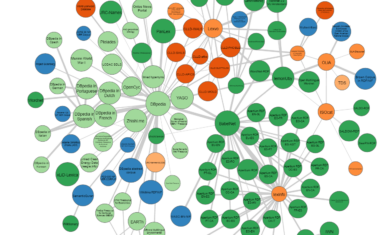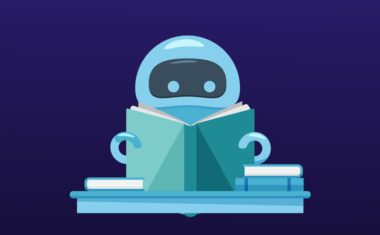The Ultimate TensorFlow Guide for Beginners

If you have been looking for a TensorFlow guide for beginners, then you have reached the right place. TensorFlow is a machine learning framework created by Google that is quickly gaining momentum around the world. Machine learning is a rather complex concept, but implementing machine learning models becomes much easier with frameworks like Google’s TensorFlow. With this open-source software library, developers can seamlessly train models based on acquired data, serve predictions, and refine future results. Tensorflow combines the concepts of machine learning and deep learning. While it uses Python to offer user-friendly, front-end API for creating applications with the framework, the computations are executed in high-performance C++.
TensorFlow Guide for Beginners: Start with the Basics
What is TensorFlow?
Originally developed by Google, TensorFlow is an open-source software library primarily designed to simplify machine learning models for developers all around the world. The open-source accelerated math library of TensorFlow helps developers in building and training machine learning models by using a wide variety of hardware including GPUs, CPUs, and even specialized chips like TPUs (Tensor Processing Units). TensorFlow can be used to create models on all sorts of platforms, right from browsers to low powered IoT gadgets. It also supports a majority of programming languages including Java, C++, Go, Python, C#, Javascript, and Swift.
Launched in 2015, TensorFlow was initially developed by the Google Brain Team for internal purposes only. But in November 2015, it was released under the Apache License 2.0. It has quickly gained popularity as the preferred library because of its easy accessibility. The library can be easily integrated with third-party APIs to build and scale deep learning architecture.
Launched in October 2019, TensorFlow 2.0 had a completely revamped framework which made it easier for users to work with it. The new version also makes it easier to manage distributed training. There was a TensorFlow Lite introduced as well which makes it possible to deploy models on a large variety of platforms. Though, in order to leverage the new features of TensorFlow 2.0, the codes that have been written for the earlier versions have to be completely rewritten or modified.
TensorFlow helps visualize the construction of neural networks as it is based on graphical computation. Even on GitHub, TensorFlow is able to attract the largest number of users, as compared to other deep learning frameworks.
Get To Know Other Data Science Students
Sam Fisher
Data Science Engineer at Stratyfy
Mengqin (Cassie) Gong
Data Scientist at Whatsapp
Hastings Reeves
Business Intelligence Analyst at Velocity Global
TensorFlow Guide for Beginners- The Components of TensorFlow
- Tensor
Tensor is the core part of TensorFlow and all the computations in the software library involve tensors. In simple words, a tensor is a vector or a matrix that represents different types of data. It can be derived from the input data or it can also be a result of the computation. Every tensor has a node and an edge. The node is responsible for carrying the mathematical operations and producing output results. On the other hand, the edges define the input and output relationships between the nodes.
Source: CV-Tricks
- Graph
All the computations in TensorFlow happen inside a graph. It includes a set of computations that take place successively and connect to different tensors. Since the graphs are portable, it is possible to save their computations for later use.
Some of the most popular algorithms supported by TensorFlow include:
- Deep learning classification
- Deep learning wipe and deep
- Linear regression
- Booster tree regression
- Booster tree classification
TensorFlow: How does it work
Developers can create dataflow graphs in TensorFlow which basically describe how data should move through a graph or the processing nodes inside the graph. Every node present in the graph represents a particular math operation and the connection between nodes is called a tensor. TensorFlow in machine learning and artificial intelligence can be easily managed with the help of Python language. All the tensors and nodes present in TensorFlow are Python objects and the TensorFlow applications are Python applications only. That said, it is important to note that the mathematical operations are not performed in Python. Instead, they are written in C++ binaries. It is possible to run TensorFlow applications on most platforms including iOS, Android, cloud, GPUs, and CPUs. In case you use Google’s cloud, you can run TensorFlow on the custom TensorFlow Processing Unit (TPU) provided by Google. The resulting models can then be deployed on any device and they can be used to make predictions.
TensorFlow makes it possible to train and run models for image recognition, recurrent neural networks, handwritten digital classification, and sequence to sequence models for natural language processing and machine translation.
For further reading, learn more about data science here and find out what a data scientist does.
Since you’re here…
Thinking about a career in data science? Enroll in our Data Science Bootcamp, and we’ll get you hired in 6 months. If you’re just getting started, take a peek at our foundational Data Science Course, and don’t forget to peep our student reviews. The data’s on our side.





